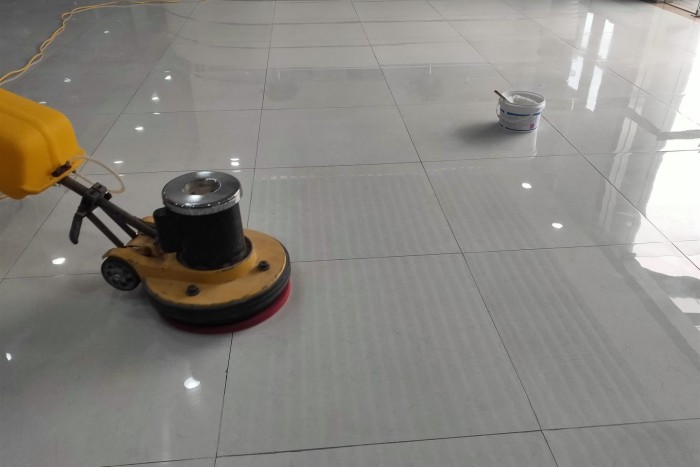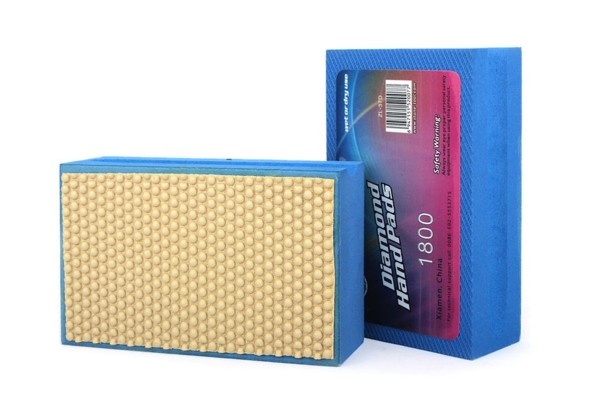Floor Stone Care Process: A Comprehensive Guide to Stone Floor Care
Stone floors like marble can add a touch of elegance and sophistication to any space. However, in order to maintain beauty and longevity, a comprehensive care process must be implemented. The care process involves several key steps.

Cleaning
Cleaning is essential to maintaining the original appearance and structural integrity of your stone flooring. Dust, sand, stains, and other debris can cause wear and tear on your floors, causing them to lose their shine and become roughened over time. Regular cleaning is essential to prevent these problems and ensure that stone floors retain their natural beauty.
Cleaning methods for stone floors include using a neutral detergent in combination with a floor scrubber. It is important to avoid using acidic, alkaline, or oxidizing cleaners as these may damage the stone surface. Using a neutral cleaner ensures effective cleaning without compromising the integrity of the stone.
During the cleaning process, close attention must be paid to the quality of the cleaning water. Clean water should be used to ensure that the surface is thoroughly clean to prevent any residual stains from remaining on the floor. By maintaining high standards of cleanliness, stone floors can maintain their luster and appeal, enhancing the overall beauty of the space.
In addition to regular cleaning, it is recommended to take preventive measures to minimize the accumulation of debris and stains on stone floors. This may include using doormats at entrances to capture dust and grit, as well as promptly treating spills and stains to prevent them from penetrating the stone surface.
Grinding
Grinding plays a key role in floor restoration and maintenance, particularly in addressing wear and tear, restoring a smooth surface, and enhancing the overall gloss effect. Whether it is marble, concrete, or another type of floor, the grinding process is critical to restoring the appearance and integrity of your floor. Understanding the nuances of grinding, including its techniques and considerations, is crucial to achieving optimal results.
The grinding process is designed to address various forms of damage to your flooring, such as wear and tear and surface imperfections. It can be divided into coarse grinding and fine grinding, each with different uses. Coarse sanding is primarily used to treat heavily worn areas, while fine sanding is designed to polish the entire floor, ensuring an even, fine finish.
When performing grinding operations, choosing the right equipment and abrasives is crucial. Using grinders with different coarseness and fineness of abrasives, the treatment can be customized to the specific needs of the floor. This approach ensures that the grinding process is optimized to meet the unique characteristics and conditions of the flooring material.
Care must be taken during the grinding process to avoid over-grinding, which may damage the floor surface. Careful execution of grinding techniques, coupled with a thorough understanding of the floor's composition and condition, is critical to achieving the desired results without compromising the floor's integrity.
Polishing
Polishing is an important aspect of stone floor care and plays a key role in enhancing the gloss, smoothness, and overall beauty of your stone flooring. Whether it is marble, granite, or another type of stone, the polishing process is critical to enhancing the visual and tactile qualities of your floor, contributing to its overall beauty and longevity. Understanding the nuances of polishing, including its methods and considerations, is crucial to achieving the best results.
The polishing process can be roughly divided into two methods: Mechanical polishing and manual polishing, each method has different advantages and precautions.
Mechanical polishing involves the use of a high-speed rotary polisher and specialized polishing pads and polishing compounds. This method results in an efficient, even polish that enhances the gloss and smoothness of the floor. The amount and duration of polish must be carefully controlled to prevent damage to the floor surface.
Manual polishing, on the other hand, involves the use of a manual polishing machine and a hand polishing pad. While manual polishing requires more patience and skill, it has the advantage of achieving a finer level of polishing, allowing for meticulous attention to detail and precision during the polishing process. This method is particularly suitable for treating specific areas or achieving a custom finish on the floor.

The importance of polishing in floor stone care cannot be overstated. By effectively polishing your floor, you can highlight the natural beauty and inherent characteristics of the stone, resulting in a visually stunning and durable surface. The polishing process not only enhances the beauty of the floor but also helps to extend its lifespan, ensuring that it retains its timeless and elegant character in any space.
Maintenance
The final step in a comprehensive stone floor care process is maintenance, which is a critical aspect in ensuring the longevity, shine, and overall beauty of the floor. Maintenance plays a key role in maintaining the natural elegance and structural integrity of stone flooring, contributing to its lasting appeal and functionality. Understanding the importance of maintenance and the proper methods and precautions is crucial to maintaining the quality and longevity of your stone flooring.
Maintenance is tailored to the specific needs and characteristics of the different types of stone, with the goal of preventing damage and maintaining the floor's beauty. Regular application of a maintenance agent is an essential aspect of maintenance, providing the necessary care to keep your floors looking their best. These agents help maintain the shine and smoothness of your floors, ensuring they retain their natural beauty over time.
In addition to using maintenance agents, regular waxing and maintenance are also key to maintaining the quality of stone floors. This process helps keep the floor smooth and shiny, enhances its visual appeal, and prevents wear and tear. By sticking to a consistent waxing schedule, your floor can maintain its shine and elasticity, contributing to its lasting beauty.
In addition, stone floors must be protected from external impacts and attack by acidic and alkaline liquids. These substances can cause damage, causing cracks and discoloration of the stone. By taking precautions to avoid exposure to harmful elements, you can protect your flooring from potential damage, ensuring its longevity and visual appeal.
Summary
Floor stone care technology is a comprehensive process that not only restores the luster of marble floors but also extends the service life of the floor and improves its anti-slip performance. From cleaning, sanding, and polishing to maintenance, every step requires meticulous detail and mastery. By adhering to these basic practices, your floor stone can maintain its timeless elegance and always look like new.
 English
English  Português
Português  русский
русский  Chinese
Chinese  French
French  Japanese
Japanese  Spanish
Spanish 



